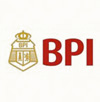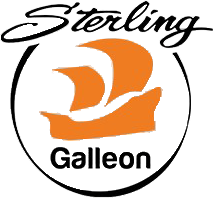All Categories
AmScope 40X-2500X Plan Infinity Laboratory Trinocular Compound Microscope
Share Tweet








About AmScope 40X-2500X Plan Infinity Laboratory
The AmScope T700D compound trinocular microscope has a Siedentopf binocular mount with interchangeable pairs of 10x plan, 20x super-widefield, and 25x super-widefield eyepieces, a reverse-mounted quintuple nosepiece with five DIN plan objectives, Brightfield halogen illumination, and a double-layer mechanical stage with a stage stop to protect slides and objectives from damage. The trinocular head has a vertical camera mount and a Siedentopf binocular mount with interchangeable pairs of PL10x, WH20x, and WH25x eyepieces, 55 to 75mm Siedentopf interpupillary adjustment, a fixed 30-degree vertical inclination to reduce eye and neck strain, and a 360-degree rotation capability to provide a more comprehensive view and enable sharing. Dioptric adjustment accommodates individual eye-strength differences. The vertical trinocular port accepts a camera with a 23mm or C-Mount adapter (camera sold separately). The mechanical tube length is 6-5/16" (160mm). The reverse-mounted revolving nosepiece has 4x, 10x, 20x, 40xS, and 100xS (oil) DIN infinity plan objectives that provide a longer working distance and improved focus over the entire range of the viewing field. The 40xS objective is spring loaded to prevent slide damage when focusing. The 100xS spring-loaded oil-immersion objective uses oil between the specimen and the objective lens to provide increased resolution over a standard objective. A compound microscope is used for inspection and dissection of specimens when two-dimensional images are desired.The microscope has Brightfield (BF) illumination which allows the specimen to absorb light, resulting in a dark image on a light background. Halogen light source provides bright light in a concentrated path, and a Kohler condenser focuses and centers the light path using two iris diaphragms, providing optimum contrast and resolution. The graduated double-layer mechanical stage, with 1mm stage divisions, locks the slide into place and provides precise slide manipulation along the X- and Y-axis to allow coordinates to be recorded, enabling the viewer to return to a specific location on the slide. A stage stop prevents the stage or specimen from coming into contact with the objectives. The stage is 6.9 x 5.7 inches (175 x 145mm), has a 1-3/16" focusing range, and a traveling range of 2-3/4 x 2 inches (70 x 50mm). Graduated coaxial coarse and fine focus has a focusing range of 1-3/16" (30mm) and fine-focus divisions of 0.002mm (0.0000787") that enable measurements to be taken. Focus knob tension control prevents the stage from drifting out of focus. The cast-alloy enamel-coated body is durable and resistant to stains and corrosion. SpecificationsHeadCompound trinocularMagnification40X-2500XTrinocular port23mm or C-MountEyepieces (30mm)PL10x, WH20x, WH25xObjectives (20mm)4X, 10x, 20x, 40xS, 100xS (oil) planStageDouble-layer mechanicalLighting configurationTransmitted (lower)CondenserKohlerDiaphragmIrisLight sourceHalogen with rheostat, 6V/20WIllumination typeBrightfieldPower90V-240V, auto-switchingMicroscopes are instruments used to enhance the resolution of an object or image. Types include compound, stereo, or digital. Compound microscopes use a compound optical system with an objective lens and an eyepiece. Stereo microscopes show object depth in a three-dimensional image. Digital microscopes are used to display an image on a monitor, rather than looking through a lens. Microscopes can have monocular (one), binocular (two), or trinocular (three) eyepieces, with varying magnification abilities. Magnification ability refers to the size of an image. Resolution, also known as resolvant power, refers to the clarity of the image. The interaction between field of view (FOV), numerical aperture (NA), and working distance (WD) determines resolution. Microscopes can control magnification through a fixed focus, or through a range of adjustments. They can also utilize LED, fluorescent, and mirror light sources to help control viewing capabilities. Microscopes are widely used in education, lab research, biology, metallurgy, engineering, chemistry, manufacturing, and in the medical, forensic science, and veterinary industries.United Scope manufactures microscopy equipment and accessories under the brand name AmScope. The company, founded in 1996, is headquartered in Irvine, CA.What's in the Box?AmScope T700D microscope with double-layer mechanical stagePL10x eyepieces, 30mm, one pairWH20x eyepieces, 30mm, one pairWH25x eyepieces, 30mm, one pair4x DIN plan objective, 20mm10x DIN plan objective, 20mm20x DIN plan objective, 20mm40xS DIN plan objective, 20mm100xS (oil) DIN plan objective, 20mmImmersion oil, one bottle(3) Color filtersSpare halogen bulbSpare fuseFocus-tension wrenchDavid screw driver, L-shapedDust coverPower cordInstructions



























